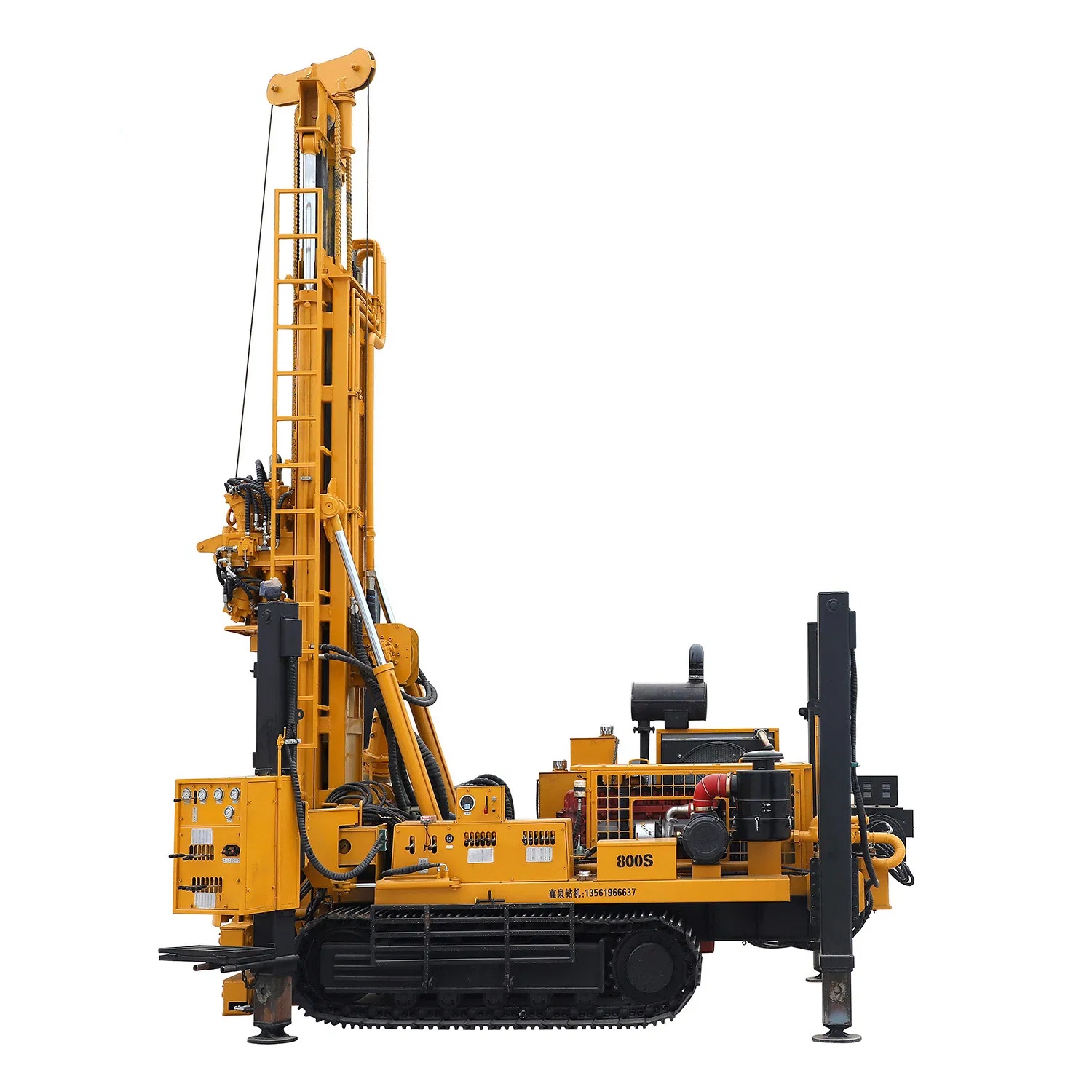- High temperatures cause metallographic changes in bit alloys, reducing hardness by 30%–50% and doubling/tripling cutting edge wear rates.water well drilling rig
- Thermal expansion/contraction loosens bit-drill pipe thread connections, triggering eccentric vibrations that worsen local wear.
- Drilling fluid degradation at high temperatures breaks the lubrication film, causing plow-like wear from direct bit-formation friction.
- Cooling system optimization: Use double-circulation water cooling to keep bit temperature below 300°C.
- Material upgrade: Choose cobalt-containing high-temperature alloys, retaining >70% hardness at 600°C.
- Operation rhythm adjustment: Cool the bit for 15 min after every 1 hour of drilling to prevent heat accumulation.
- Drilling fluid viscosity surges by 400% below 0°C, losing cuttings-carrying ability and causing bit balling.
- Reduced hydraulic oil fluidity delays WOB control, leading to impact-induced bit wear.
- Micro-cracks form due to thermal expansion mismatches between alloy teeth and the body, increasing low-temperature brittleness fracture risks.
- Drilling fluid modification: Add ethylene glycol antifreeze to lower freezing point to -30°C and maintain lubricity.
- Equipment preheating process: Idle the hydraulic system for 30 min with electric tracing before operation.
- Anti-brittleness design: Use nickel-containing low-temperature tough alloy teeth, boosting fracture toughness by >60%.
- Acidic mine water (pH<4) causes electrochemical corrosion of alloy teeth, forming a loose oxide layer.
- Cl⁻-containing formation water induces stress corrosion cracking at bit cutting edge roots.
- Sulfide gases react with drilling fluid to form strong acids, accelerating carbide binder phase dissolution.
- Material coating technology: Apply TiN/TiCN composite coatings via CVD, enhancing corrosion resistance 5-fold.
- Drilling fluid anti-corrosion formula: Add organic amine inhibitors to limit corrosion rate below 0.05 mm/year.
- Post-operation inspection mechanism: Conduct fluorescent penetrant testing after each job to detect stress corrosion cracks.
- Environmental database construction: Build temperature-humidity-corrosive media archives by operation area for bit selection knowledge.
- Intelligent monitoring system: Integrate temperature sensors and corrosion potential meters for real-time wear risk alerts.
- Differentiated maintenance protocols: Prioritize cooling system cleaning in high-temperature zones, oil anti-gelling in low-temperature areas, and coating repair in corrosive zones.
Technical Summary: Environmental factors exacerbate bit wear via thermal effects, fluid property changes, and chemical corrosion. A “material-process-management” trinity protection system is essential. Adjust solutions dynamically per environmental parameters—e.g., use ceramic matrix composite bits in desert high-temperature areas or electric-heated drilling fluid systems in cold permafrost regions for precise wear control.water well drilling rig
 2. Wear Triggers and Solutions in Low-Temperature Environments
2. Wear Triggers and Solutions in Low-Temperature Environments 邦欣鑽機
邦欣鑽機